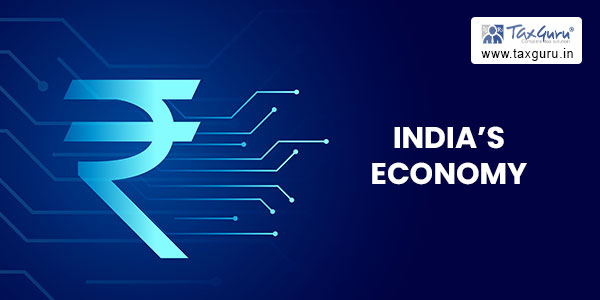The Indian economy has come a long way in terms of economic growth and development, when compared to the other world-leading economies. Since the liberalization of the Indian economy in the 1980s, India’s GDP (Gross Domestic Product) growth rate has steadily increased and in the past decade, the country has emerged as one of the world’s fastest-growing major economies.
The Indian government has a set long-term vision for the country to become a $5 trillion economy by the year 2025. According to NITI Aayog Vice-Chairman Rajiv Kumar, the economy needs to register 10 per cent growth rate for this goal to be achieved. The government has also set two targets for GDP growth. The target rate for the 2021-22 fiscal year has been set at 11.5 per cent, while the target rate for the 2023-24 fiscal year is set at 12.5 per cent. This target is based on projections of continued consumption-driven growth as investors and consumers start to adjust to the ‘normal’.
The 10-year plan for the 2030-40 decade includes the goal of ensuring that by 2023-24, GDP should be double the GDP of 2014-15. This is to be achieved by reducing poverty, accelerating job creation, and increasing investment in healthcare, education, infrastructure and social sectors. Additionally, the plan focuses on improving ease of living for citizens, and increasing access to credit, particularly for women, small businesses and farmers.
India is one of the top economies in the world and is projected to remain among the world’s top three economies through 2025-26. Over the past few years, India has experienced rapid economic growth with increasing investment in infrastructure and technology, a burgeoning middle class and a young labor force. According to the International Monetary Fund (IMF) and the World Bank, GDP growth in India is forecasted to remain above 7 percent per annum through 2025, making it the third largest economy in the world. In comparison, the US and China are anticipated to remain in the top two spots with an estimated GDP growth of 2.8 percent and 6.5 percent, respectively. India’s comparatively higher forecasted growth rate is due to its younger population, better access to education and technology and rapidly expanding technological and business sectors. Despite its robust economic growth, India faces challenges including a high budget deficit, declining infrastructure, rising inequality and a banking sector that struggles with higher non-performing assets (NPA). The country is working towards improving these challenges in order to maintain its economic growth and development in the future.

The impact of the conflict between Russia and Ukraine on India’s GDP and growth is expected to be minimal in the short-term. The Indian economy, being largely isolated from the crisis, is not likely to suffer the same direct economic losses that would be seen in the European Union’s single market. However, the conflict between Russia and Ukraine could have implications for India in the medium-term due to its potential to heighten tension and lead to increased military expenditure among the countries involved. This could potentially lead to a rise in oil prices, which would affect India’s GDP and growth in the coming two years. Additionally, the crisis could also disrupt the flow of trade between Russia and countries that are traditional Indian buyers such as Iran and the Euro-zone. This could have an indirect impact on India’s GDP and growth if it reduces the amount of trade and investment that flow into the country. Finally, it is also possible that India may be able to take advantage of opportunities that arise as a result of the conflict if Ukraine begins to look more to India as an economic partner. For example, India could potentially gain a competitive edge in certain trade sectors due to the lack of competition it would face in the Ukrainian market.
Despite the lower growth rates in comparison to the world’s top three economies, India has managed to sustain relatively consistent growth and potentially puts it in a position to emerge as a global contender in the post-COVID-19 world. The government’s 10-year plan is an ambitious but achievable goal that, if achieved, could effectively put India on the world’s economic map while providing further impetus to its economic story. By setting clear short and long-term targets and implementing strategies that help the country achieve them, India may be able to improve the standard of living for all of its citizens and become a truly global player.
(Author can be reached at email address casharma.sharad2000@gmail.com or on Mobile No. 9990365673)
Disclaimer: “Neither this article nor the information contained herein shall in any way be construed as forming a contract or shall constitute professional advice required before acting upon any matter. CA Sharad Kumar Sharma has taken all due care in the preparation of this article for accuracy in its contents at the time of publication. However, no liability shall be accepted by him in the event of any direct, indirect or consequential damages arising out of or in any way connected with the use of this article or its contents. “




